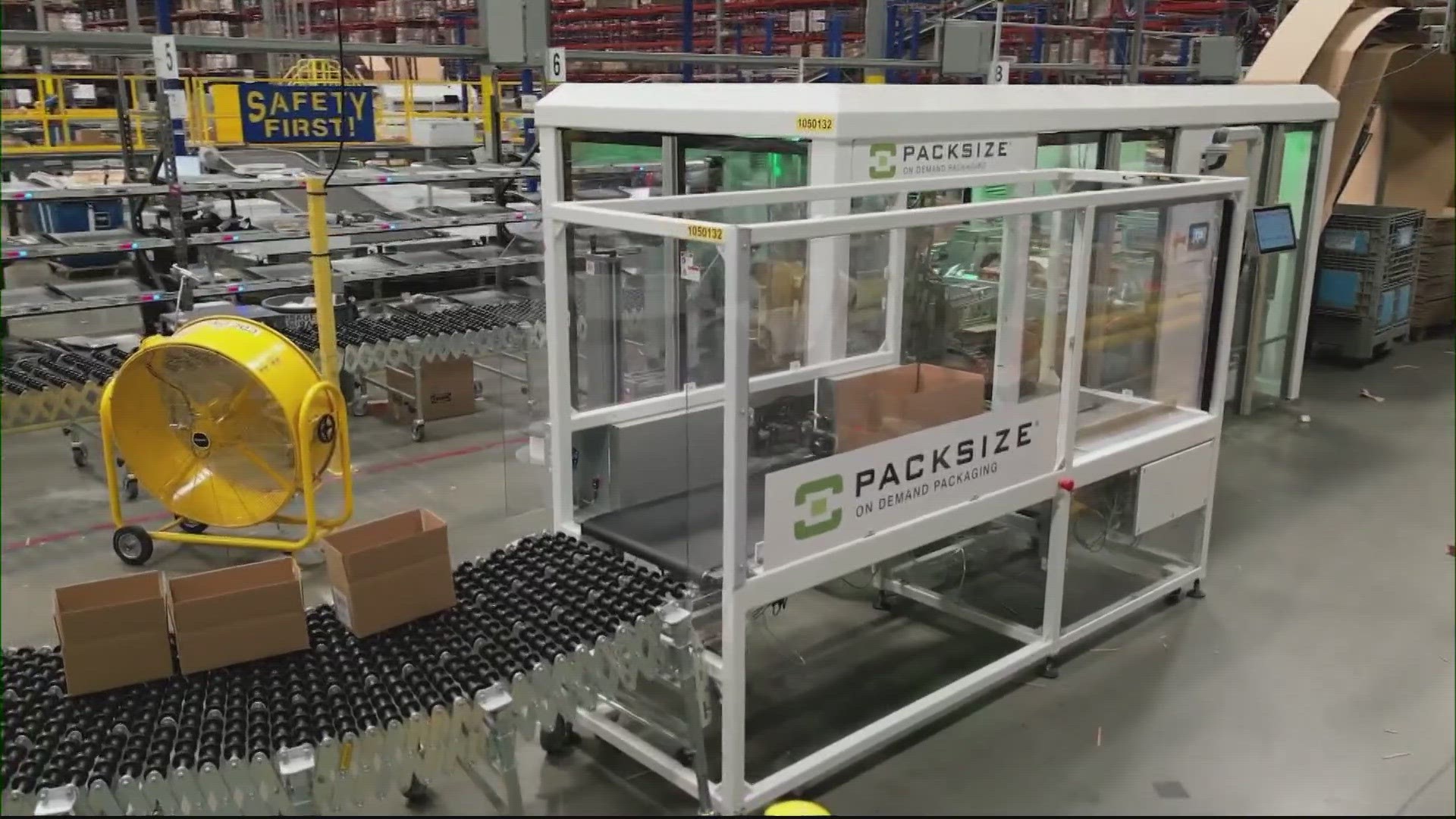WASHINGTON — It happens more often than not. You scroll the web or your favorite app and something catches your eye. A few clicks later, you order a small item, and yet it arrives in a huge box stuffed with paper, plastic bubble wrap, or peanuts. While these items are great at protecting packages, it comes at a cost to the environment.
What doesn't get recycled could end up in a landfill. The Environmental Protection Agency found 17.2 million tons of paper and cardboard ended up in a landfill in 2018.
Retailers like Walmart and Amazon are tackling the problem with customized boxes, which help eliminate the need for additional paper or plastic to protect shipments.
Utah-based Packsize has technology that makes boxes sfit the exact size of the item being shipped. The machines get measurements on an item, build a cardboard box, creases, folds, labels and seals it. Boxes can be ready to ship in as little as 30 minutes. Packsize's technology can crank out as many as 600 boxes per hour, according to the company's website. The company can build a box customized to fit something as small as a golf ball or a golf cart.
“If you think about shipping boxes, if you use less material outside, definitely they’ll be less material inside," said American University Assistant Professor Garima Sharma. "So a win for the environment, also possible cost savings for the company," she said.
In addition to cutting cardboard waste, more boxes can fit on delivery trucks.
"By right-sizing boxes, the technology minimizes the costs and environmental impact of extraneous and unneeded corrugated boxes. It also improves parcel logistics, enabling retailers to fit up to 33% more boxes on freight and delivery carriers – ultimately getting more orders to customers daily," Packsize said in a statement.
Sharma said customized boxes are only one piece of the sustainability puzzle and hopes that more can be done.
"Returns is a big issue. 90 percent of customer returns by some standards end up in a landfill. We need to think of customer purchasing behavior. We need to think about how waste is disposed," Sharma said.
Some ways to reduce waste include buying quality items that will last longer, to avoid tossing them in the landfill. Assistant Professor Sharma also suggested perhaps making returns harder, or creating an alternate economy where people can sell items that they intend to return instead of returning them.
Sharma is working on research with a team of experts based out of Canada to solve sustainability issues with a group called Innovation North.

